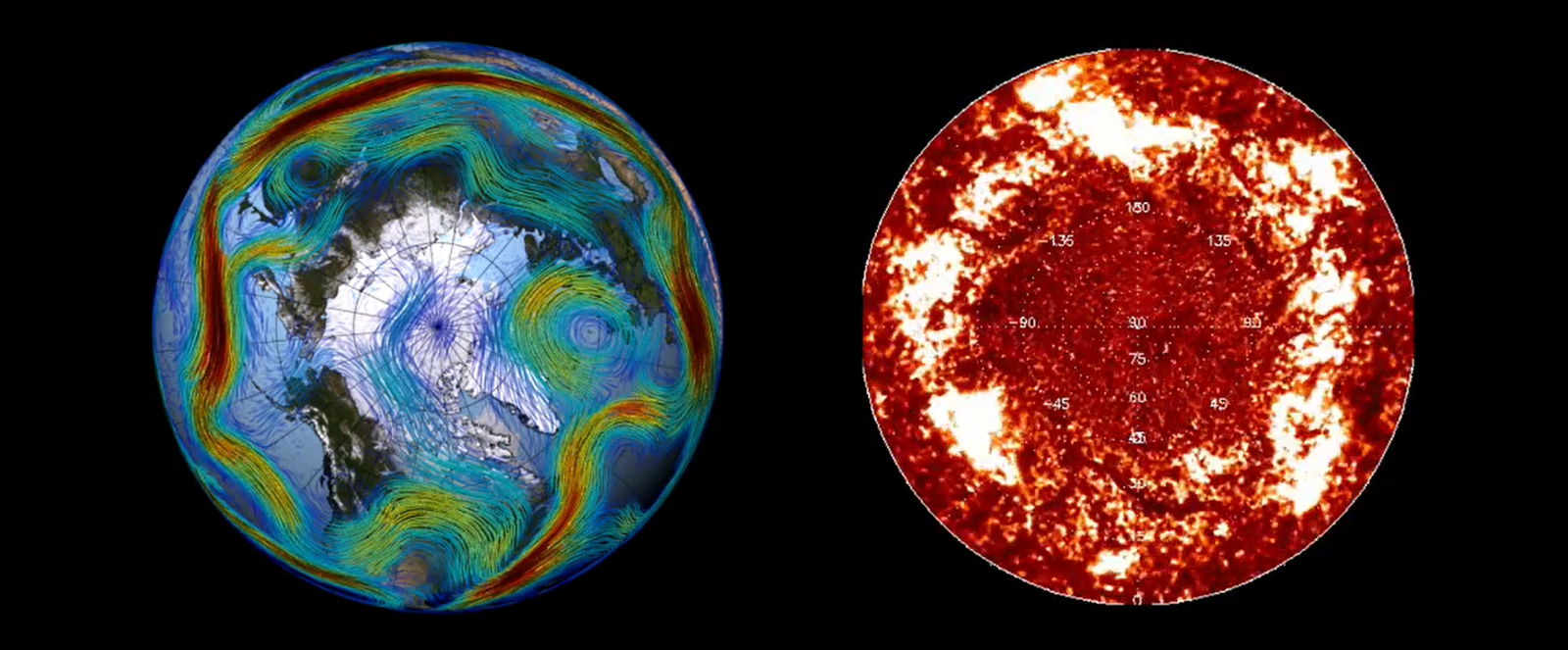The equivalent of huge ripples in Earth’s atmosphere – Rossby waves – that steer weather patterns have been found on the Sun, an insight that could help predict solar storms that can wreak havoc here on Earth.
Scientists are racing to improve our forecasting of severe space weather, which occurs when the Sun ejects huge clouds of super-heated, electrically-charged material (plasma) that can disrupt power grids, satellite navigation and communication, potentially costing society billions.
The recent discovery of magnetized Rossby waves on the Sun offers ‘the tantalizing possibility that we can predict space weather much further in advance,’ said Scott McIntosh of the National Center for Atmospheric Research in Boulder, Colorado.
With William Cramer of Yale University, Manuel Pichardo Marcano of Texas Tech University, and Robert Leamon of the University of Maryland, College Park, McIntosh reported in the journal Nature Astronomy evidence that the Sun hosts Rossby waves.
The waves form in rotating fluids and can be observed in the atmosphere and in the oceans on Earth. However, their existence on the Sun has long been debated.
Because the Sun is also rotating, and because it’s made largely of plasma that acts, in some respect, like a magnetized ocean world, the existence of Rossby-like waves should not come as a surprise, said McIntosh, who directs NCAR’s High Altitude Observatory.
Unlike Earth, which is surrounded by satellites, scientists historically have been able to study the Sun from only one viewpoint: from the direction of Earth. But from 2011 to 2014, scientists had an unprecedented chance to view the Sun’s entire atmosphere.

During that period, observations from NASA’s Solar Dynamics Observatory (SDO), which sits between the Sun and Earth, were supplemented by measurements from NASA’s Solar TErrestrial RElations Observatory (STEREO) mission.
Analysis of the data gathered by these craft revealed bands of magnetized activity that sweep slowly across the Sun – just like the Rossby waves on Earth.
‘The discovery of Rossby-like waves on the Sun could be important for the prediction of solar storms, the main drivers of space weather effects on Earth,’ commented Ilia Roussev, program director in the US National Science Foundation’s Division of Atmospheric and Geospace Sciences.
Teimuraz Zaqarashvili of the Space Research Institute of the Austrian Academy of Sciences, Graz, believes Rossby waves might be an important tool to predict long-term appearance of solar flares and coronal mass ejections, after recently publishing a theoretical analysis of wave dynamics in the Sun’s interior which shows rhythms similar to those observed in solar storms. ‘Internal magnetised Rossby waves are trapped at lower latitudes where solar storms generally appear,’ he said. ‘Plasma conditions in the interior favour the wave periods which are observed in solar activity, therefore the waves might drive solar surface magnetic weather. Future theoretical modelling and observations may significantly improve prediction of solar storms.’
The Science Museum, alongside its recent exhibition The Sun: Living with Our Star, launched a citizen science experiment with the University of Reading to help study patterns in solar storm activity and, ultimately, improve space weather predictions.

So far some 80,000 classifications have been made by around 900 volunteers. Through this citizen science project everyone has the chance to find out more about this threat and help protect our planet – visit our Zooniverse project page and click on the ‘classify’ tab to help compare as many of the thousands of images of solar storms as you can.
The science is fascinating but there is still more work to be done to link Rossby waves to space weather, commented Prof Chris Scott at the University of Reading on the American research.
Learn more about humanity’s relationship with our nearest star in this blog series, based on our recent exhibition The Sun: Living With Our Star.
You can take part in our citizen science project and help save the world from solar storms here.
Read more about solar storms and space weather at the Science Museum’s Objects & Stories pages.